Author: David C, Bankless; Translator: Tao Zhu, Golden Finance
With the recent surge in ETFs, stablecoins and real-world assets (RWAs) have become the most powerful way for real-world adoption and enhancing the existing financial system through on-chain economies.
Larry Fink’s “tokenized world” mission has been one of the most discussed memes of this cycle, and he has continued this vision in Blackrock’s tokenized on-chain fund BUIDL. Stablecoins remain a focus of discussion due to protocols such as Ethena, Stripe’s re-entry into the market with USDC payments, and new EU regulations such as MiCA.
While Ethereum and Tron are stablecoin hubs, Solana has stood out in this cycle, with daily trading volumes exceeding $100 billion during its peak. RWA activity on the network is also increasing, with Ondo’s USDY as DeFi collateral, Maple Finance’s partnership with Jito, and the launch of Libre Fund.
This article will dive into all of these developments to understand the momentum Solana is gaining in becoming one of the chains with the most real-world applications.
Stablecoins on Solana
Stablecoins on Solana have shown strong momentum and continued expansion this cycle, highlighting the network’s robustness and attractiveness to stablecoin issuers.
Today, Circle’s USDC dominates the stablecoin space on Solana, accounting for ~70% of the chain’s total stablecoin supply, despite holding only ~30% on Ethereum.
As of this week, USDC outnumbers USDT (the second largest on-chain) by about 19:1, despite USDT’s total market cap of $114 billion and daily trading volume of $31.5 billion on Ethereum, exceeding the top 20 ERC tokens combined. USDC’s dominance on Solana stems from Circle and the Solana Foundation’s strategy to incentivize developers and promote integration on trading platforms.
For example, developer grants in the form of USDC from platforms such as Solend and SuperTeam have attracted more developers to Solana. Circle’s launch of the Cross-Chain Transfer Protocol (CCTP) on Solana has also improved USDC’s usability and liquidity. In addition, Circle’s Web3 services simplify smart contract development, meet developer needs and facilitate USDC integration. Altogether, these efforts are aimed at unifying DeFi and establishing USDC as Solana’s leading stablecoin.
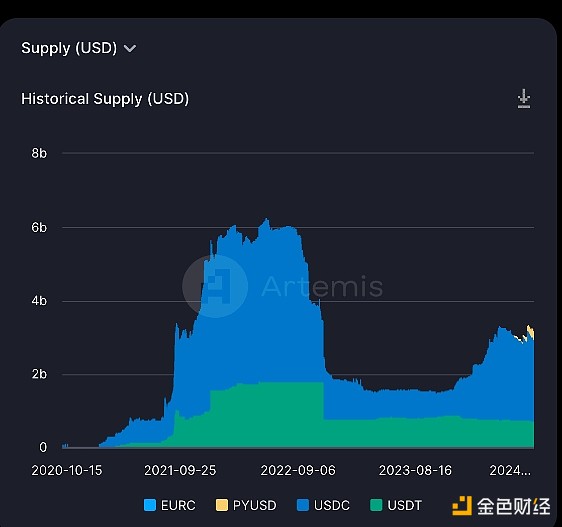
In third place is Paypal’s PYUSD, with a circulating supply of around $240 million, which now accounts for around 11% of Solana’s total stablecoin supply after launching less than two months ago.
DeFi protocols such as Kamino Finance have fueled this growth by offering significant supply-side yields for PYUSD starting July 1. These yields start at 30% and fall to 23%, but borrowing APY is 0.22%, compared to 21% for USDC and 16.5% for USDT, making PYUSD an attractive DeFi tool. In the week following July 1, PYUSD supply increased by 88%, with 38% of that going into Kamino.
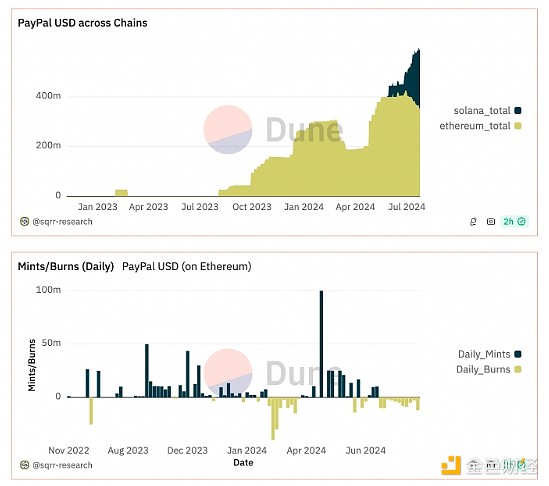
Beyond stablecoin issuers, integrations with Solana from major financial platforms like Stripe and Shopify have opened up new opportunities for developers and businesses to leverage the network to build trusted platforms that meet everyday needs and connect Solana to mainstream finance.
Here, projects like Sphere, Lulo, Decaf, and Helio are already in development, simplifying crypto trading and leveraging stablecoins like USDC to offer everyday financial services such as conversion to local currencies, crypto payments to facilitate e-commerce, and high-yield savings.
Overall, the stablecoin momentum seen on Solana appears poised to expand the product offerings of the existing financial system through efficient on-chain solutions.
RWAs on Solana
Although quieter than Ethereum’s RWA growth, Solana’s integration of real-world assets is building a fertile ecosystem beyond tokenized treasuries.
Ondo Finance’s flagship tokenized treasury product, USDY, was deployed on Solana in December 2023 and currently has a market cap of $42 million, which is relatively small compared to other leading stablecoins, and it is often categorized as a stablecoin. Despite its size, USDY has made interesting progress, such as being integrated as collateral into the perps DEX Drift Protocol.
This and future collaborations add utility beyond lending to tokenized real-world assets, improving capital efficiency for traders.
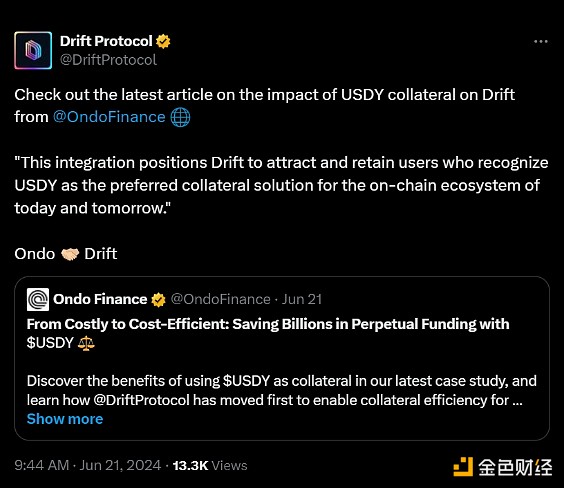
Today, some of the other most interesting RWA projects in the Solana ecosystem include Maple and Parcl.
Maple is a market for whitelisted companies to borrow from on-chain liquidity pools. It was redeployed to Solana last year to provide a yield channel for stablecoins and altcoins through the overcollateralized loan market. In addition to this, Maple has also launched a new retail loan product Syrup in partnership with Jito. The partnership will provide flexible financing to borrowers using JitoSOL, unlock revenue streams for lenders, and enhance risk management through JitoSOL’s liquidity.
Parcl is a real estate perpetual DEX that allows users to invest and trade (long or short, with up to 10x leverage) specific geographic markets such as Boston, Chicago, or Miami. The protocol is designed for directional investment and hedging strategies, democratizing access to a traditionally opaque asset class. Parcl is also expanding into the FX space, with the upcoming launch of British Pound (GBP) and Euro (EUR) markets.
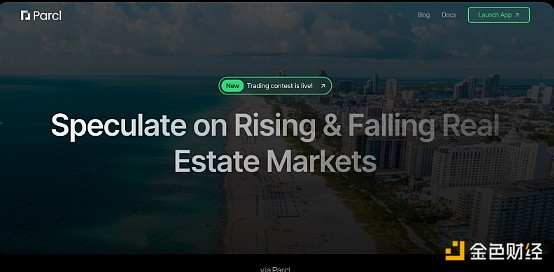
This is just the beginning of Solana RWA’s expansion, which will continue to be powered by the recently announced Libre Fund and the upcoming Jupiter’s GUM Alliance and elmnts’ exchange.
Libre Funds
Libre, a joint venture between Brevan Howard’s WebN Group and Nomura’s Laser Digital, is launching a series of tokenized funds on Solana, such as the Hamilton Lane SCOPE Fund, known for its high yield, and the Brevan Howard Master Fund, which focuses on global macro trading strategies. Libre’s initiative, which already has nearly $20 million in TVL ahead of launch, plans to launch secondary trading services for its fund later this year.
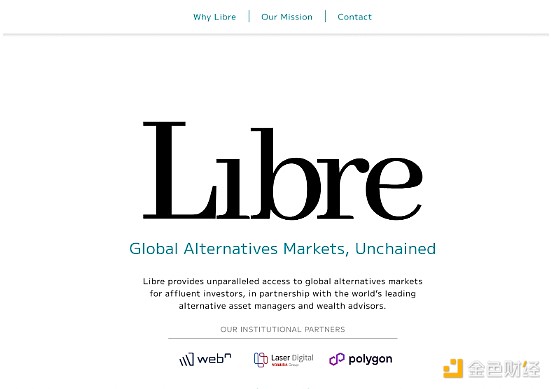
Jupiter’s GUM Alliance
Jupiter’s Grand Unified Markets (GUM) initiative, in partnership with the Solana Foundation and market makers like Wintermute and DWF Labs, aims to create a “single atomic market” on Jupiter for all assets from FX and equities to RWAs like credit, treasuries and real estate, as well as cryptocurrencies.
The initiative aims to efficiently introduce tokenized assets by ensuring deep liquidity and solving the common “chicken and egg” problem in tokenization, where issuers are reluctant to tokenize assets without liquidity, and liquidity remains low until more assets are tokenized.
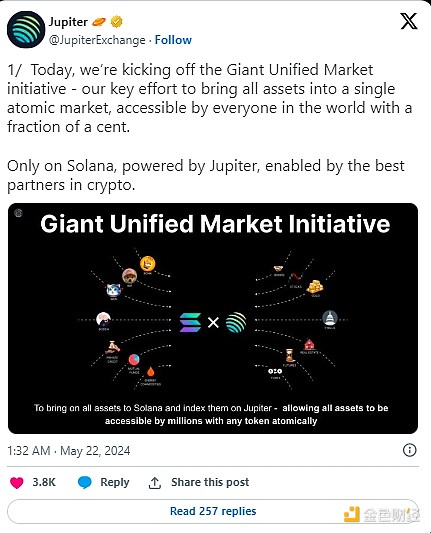
Elmnts
Elmnts is an upcoming marketplace for tokenizing essential energy resources such as mineral rights in the oil and gas industry, which is expected to generate more than $800 billion in revenue in 2024. This approach improves transparency, accessibility, and liquidity, solving the problems of high transaction costs and low liquidity in the current market.
To this end, the company acquires mineral rights through auctions, private sales, and networks, and experts track active lease areas and understand the oil and gas market. This market simplifies the investment process, reduces costs, and allows more investors to participate with lower fees and minimums.
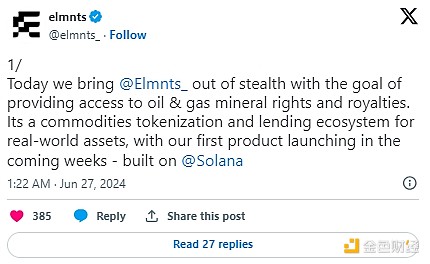
Summary
With the substantial growth of stablecoins and the continuous stabilization of RWA products, Solana has laid a solid foundation for expanding the real-world market using the on-chain economy.
With new and upcoming initiatives like Libre’s Tokenized Fund, Jupiter’s GUM Alliance, and elmnts’ Fundamental Energy Resource Marketplace, Solana continues to not only embed itself more deeply into the RWA market, but also provide broader access to on-chain real-world assets than most other chains.
In fact, a recent report from Coingecko showed that the top 2 narratives for Q2 2024 are memecoins (of course) and RWAs. If Solana can attract the same attention to RWAs as memecoins did, it could attract institutional capital to the chain and solidify its position as a leader in this cycle’s trends.
As the existing financial system converges with the decentralized financial system, Solana’s role in facilitating the tokenization of traditional assets will continue to expand, solidifying its position as the chain that can meet all needs, whether from retail or institutional.
 JinseFinance
JinseFinance
 JinseFinance
JinseFinance JinseFinance
JinseFinance JinseFinance
JinseFinance JinseFinance
JinseFinance JinseFinance
JinseFinance Coindesk
Coindesk Bitcoinist
Bitcoinist Bitcoinist
Bitcoinist Nulltx
Nulltx Ftftx
Ftftx